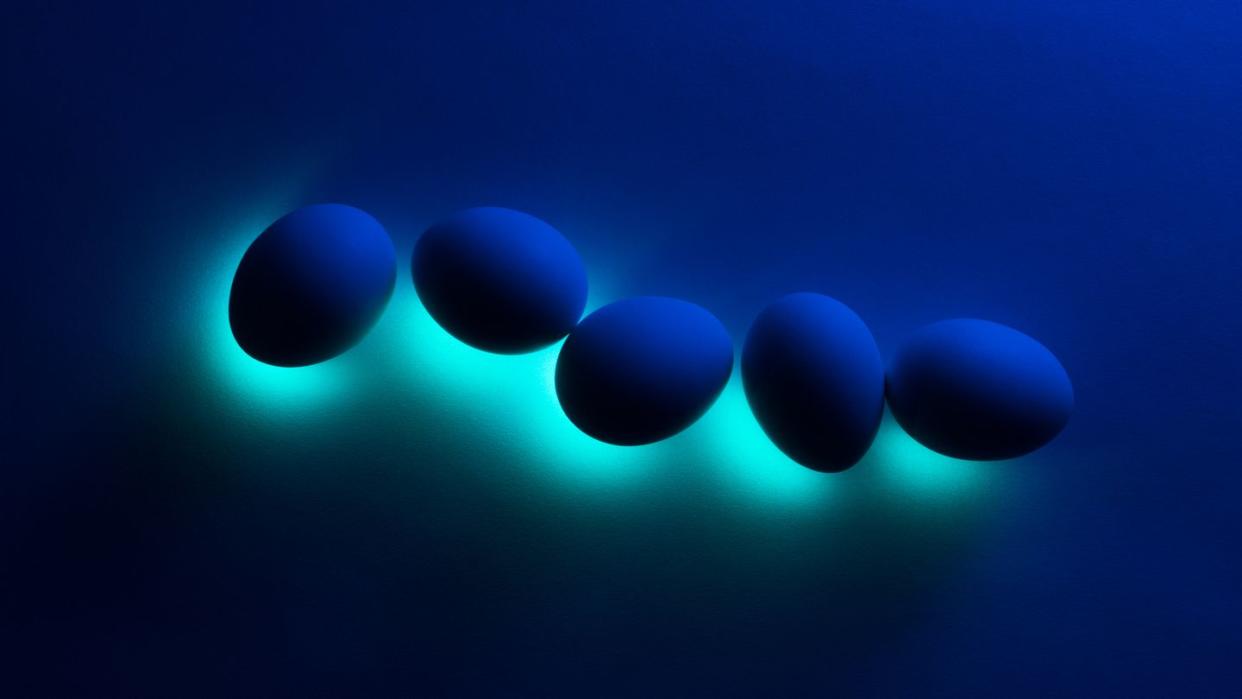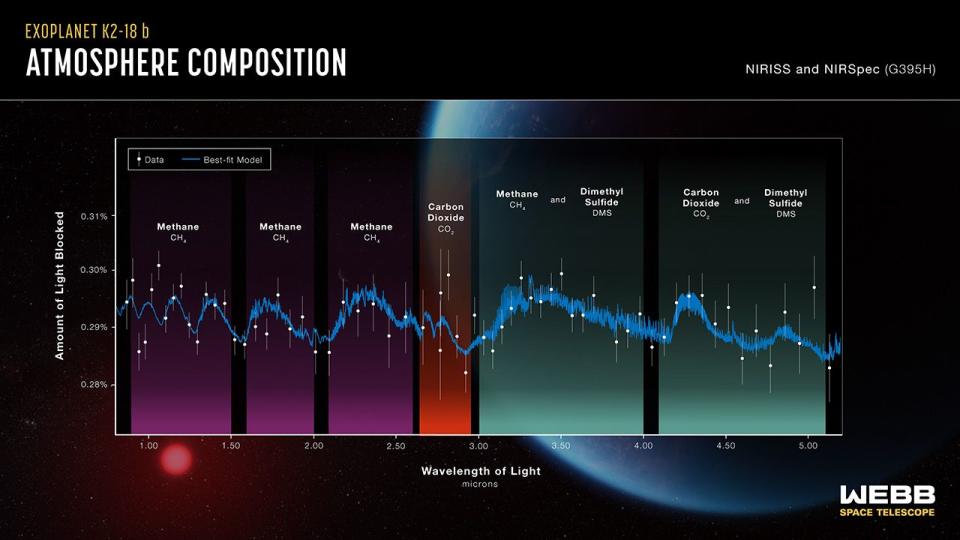We Just Found a Molecule on Another World...and Only Living Organisms Can Produce It

NASA recently announced the detection of a potential signature of extraterrestrial life in the atmosphere of a planet located 120 light years away.
Observations with the James Webb Space Telescope produced a potential detection of the molecule dimethyl sulfide, which is only produced by living organisms on Earth.
Researchers are still calling this a tentative detection, and are preaching caution before declaring “it’s aliens.” Follow-up confirmation observations will occur in the next year.
We’ve had a lot of extraterrestrial-adjacent news this week. From there’s-no-way-these-are-real “aliens” in Mexico to a NASA conference on UFOs (or UAP, as they’re now being called), it’s been a week full of speculation about life on other worlds.
But this particular piece of news is a bit different than the rest in a potentially very exciting way. Researchers just announced—via a new paper that has been accepted for publication in The Astrophysical Journal—that they picked up a very interesting chemical signature in the atmosphere of a far-away exoplanet called K2-18 b using the James Webb Space Telescope.
The molecule is called dimethyl sulfide, or DMS. On Earth, it’s only produced by living organisms.
Get the latest space discoveries delivered straight to your inbox.
Sign up for our free newsletter and receive a daily digest of the most exciting science news stories in the world. Subscribe for free.
Now, before we get ahead of ourselves, it’s a tentative detection. While JWST is an incredibly powerful telescope, and it was able to detect very clear signatures of molecules like carbon dioxide and methane, the detection of DMS is still being labeled as “possible.” It will require a follow-up data collection to verify that the molecule is for-sure present in the atmosphere.
We saw a similar “hold-the-phone” moment a few years ago, when researchers reported seeing phosphene in the atmosphere of Venus. The Venus potential-life-signature ended up being dismissed, but it was certainly worth a double-check.

As is this detection of DMS—especially considering that, if we were to find signs of life on other worlds, K2-18 b is exactly the kind of world we’d expect to find it on.
Researchers first took an interest in K2-18 b—a sub-Neptune planet about 8.6 time the mass of Earth—after detecting water vapor in its atmosphere. We cannot see K2-18 b clearly enough to take a picture of the planet directly, so researchers characterize it by things like mass estimates and chemical signatures.
Our current working theory of what K2-18 b is like has it categorized as a Hycean world—a type of planet entirely covered by a temperate ocean and insulated by a hydrogen-rich atmosphere. It orbits around a fairly cool star, and is nicely situated in its system’s habitable zone. All pretty stellar check marks in the “helpful” column for fostering life.
It’s a promising planet with an exciting potential detection, but even the researchers involved in this project are preaching caution right now. The thing about the universe is that it’s big and it’s varied. When we’re looking for alien life, all other possible explanations have to be ruled out before you can shout eureka. “Aliens” is not an answer researchers jump to—it’s arguably the most exciting to the most people, but it is a last resort.
And even if it’s not alien life, it’s an incredible demonstration of the observational power of JWST.
“This result was only possible because of the extended wavelength range and unprecedented sensitivity of Webb, which enabled robust detection of spectral features with just two transits,” Nikku Madhusudhan, lead author of the paper, said in a NASA press release.
“Transits” here refers to the passing of a planet in front of a star. When a planet sits between us and a star, some of the light put out by the star gets filtered through the atmosphere of a planet on its way to us. Looking at the way that starlight changes is how we observe the chemical composition of exoplanets.
“For comparison,” Madhusudhan continued, “one transit observation with Webb provided comparable precision to eight observations with Hubble conducted over a few years and in a relatively narrow wavelength range.”
Extraterrestrial organisms or not, we are getting good enough at seeing into the atmospheres of exoplanets that we are getting flags. A lot of those flags are probably going to be false, but having the observational capacity to see flags at all was completely out of our reach just a short time ago.
“Our ultimate goal is the identification of life on a habitable exoplanet, which would transform our understanding of our place in the universe,” Madhusudhan said in a news release. “Our findings are a promising step towards a deeper understanding of Hycean worlds in this quest.”
And who knows? Maybe the quest is over, and this isn’t a false flag after all. We’ll just have to wait a year for that follow-up observation and see for ourselves.
You Might Also Like
